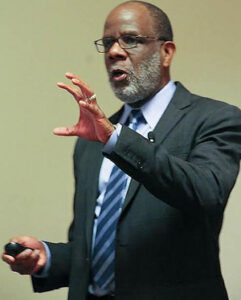By Michael Roosevelt, Senior Analyst and Judicial Educator, Criminal Justice Services, Judicial Council of California

Last year, the Education and Curriculum Committee along with the Diversity, Access, and Fairness Committee, released its newest curriculum design, The Journey toward Diversity, Fairness, and Access through Education, which is a roadmap for judicial educators and practitioners wishing to develop or integrate fairness and bias related topics. Early curriculum adopters have lauded it.
However, to more widely disseminate the curriculum, my co-faculty Karen Thorson, Consultant and former director of the Center for Judicial Education and Research for the Judicial Council of California and I introduced the membership to the curriculum in a plenary session, “NASJE’s Newest Curriculum: Diversity, Fairness, and Access”, during the 2015 NASJE Annual Conference in Seattle, Washington. The content of the curriculum design addresses fairness issues relevant to the work of judicial branch educators. The design prompts consideration of each educator’s own actions with regards to diversity, access and fairness, as well as their management of fairness courses for judges and court personnel. The goals of the session as described in the NASJE Conference program were as follows:
This plenary session has two purposes. The first is to engage judicial branch educators in an experiential learning situation to transform their perspectives and professional actions regarding diversity, fairness, and access. The second is to directly connect them to the real-world uses and practical application of NASJE’s recently adopted curriculum design on diversity, fairness, and access, which is the basis for the learning situation.
Rather than proceed methodically through each section of the design, an unsatisfying approach at best, we selected key content areas suitable for the size of the group and the time available. We frequently had judicial branch educators reference the curriculum design to make connections between selected content and delivery method. For example, before discussing bias (content), participants were asked to participate in a brief table group (delivery method) exercise requiring them to share an experience of being treated unfairly (connection).
Additionally, we encouraged participants to connect the curriculum content to the practical world inhabited by judicial educators. For example, one thing judicial educators must do is recruit faculty from diverse backgrounds. Rather than simply discuss how to select diverse faculty (content) for access, fairness and diversity courses, we modeled it: I’m African American and my co-faculty white. While we acknowledge that the availability of diverse faculty varies by state, judicial educators should, whenever possible, identify and recruit diverse faculty.
We hope, in the future, to deliver the diversity, fairness, and access content from the curriculum design as a webinar and reach those who were not able to join us in Seattle. Look for the webinar in 2016.
